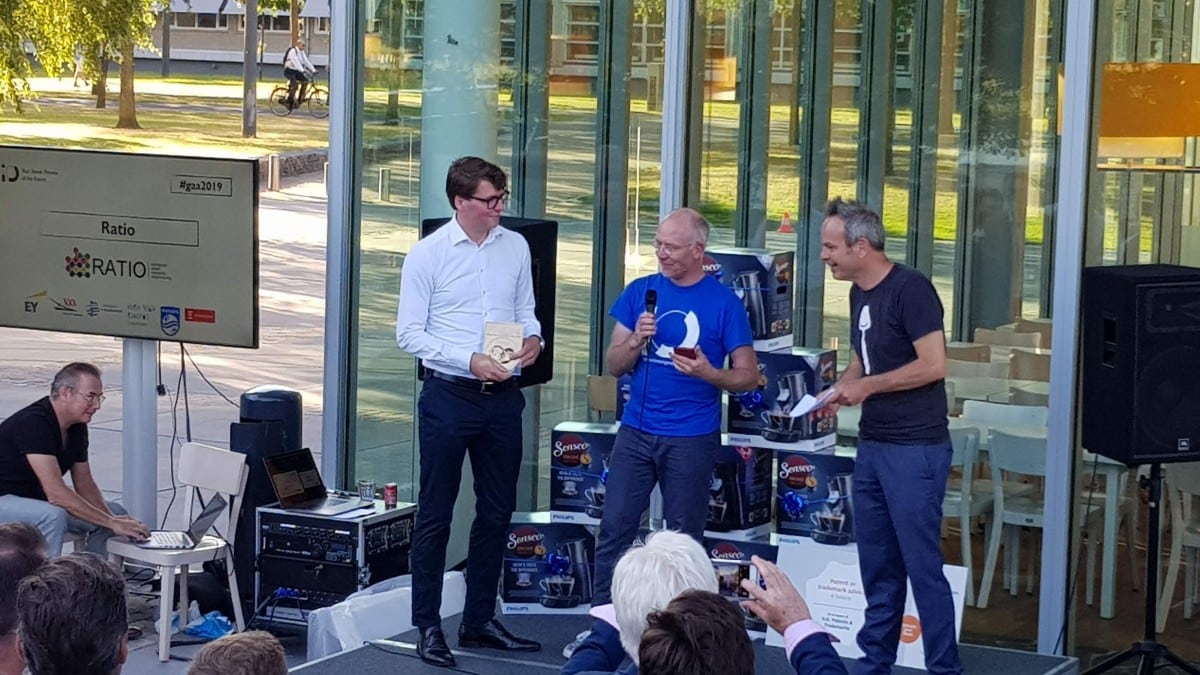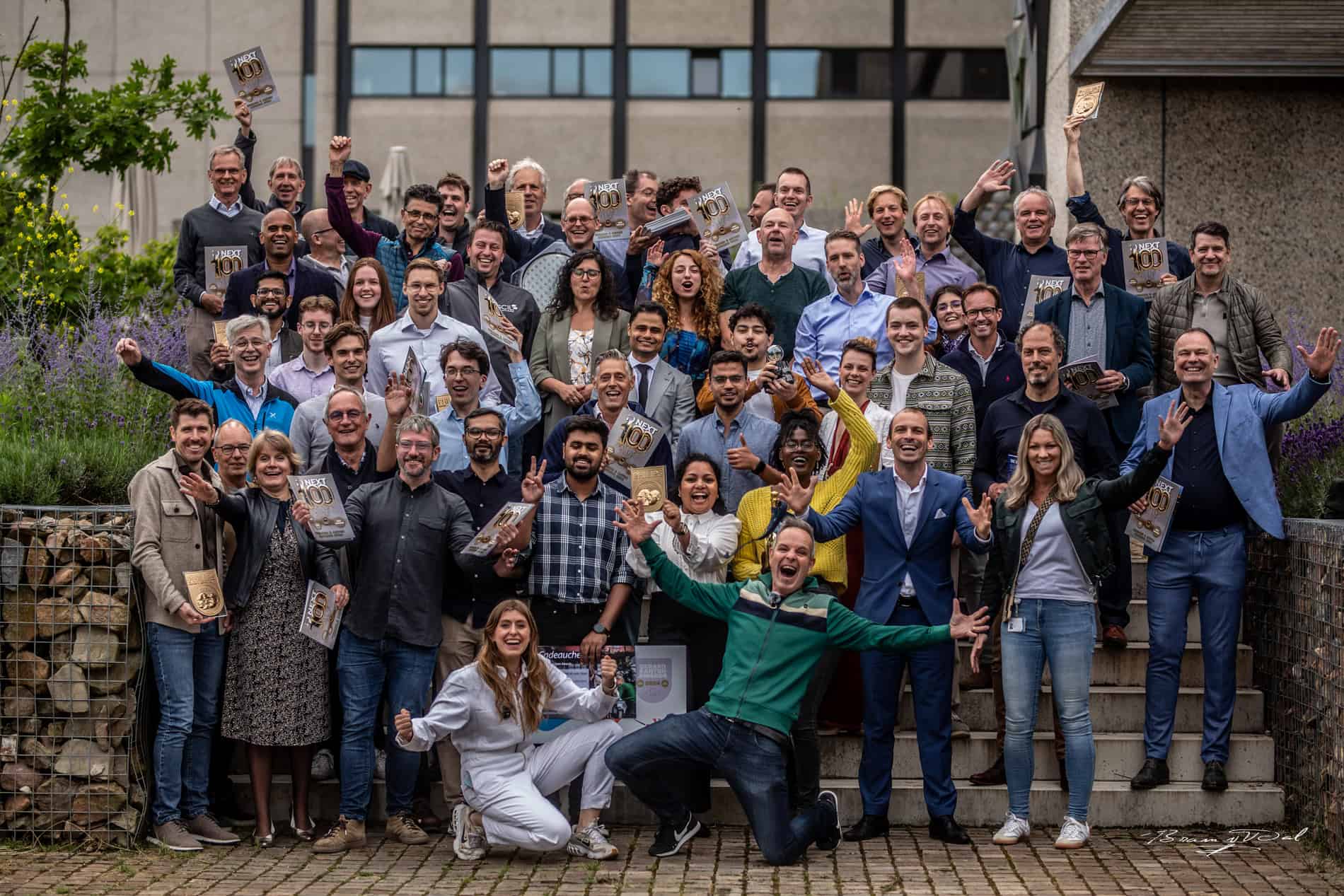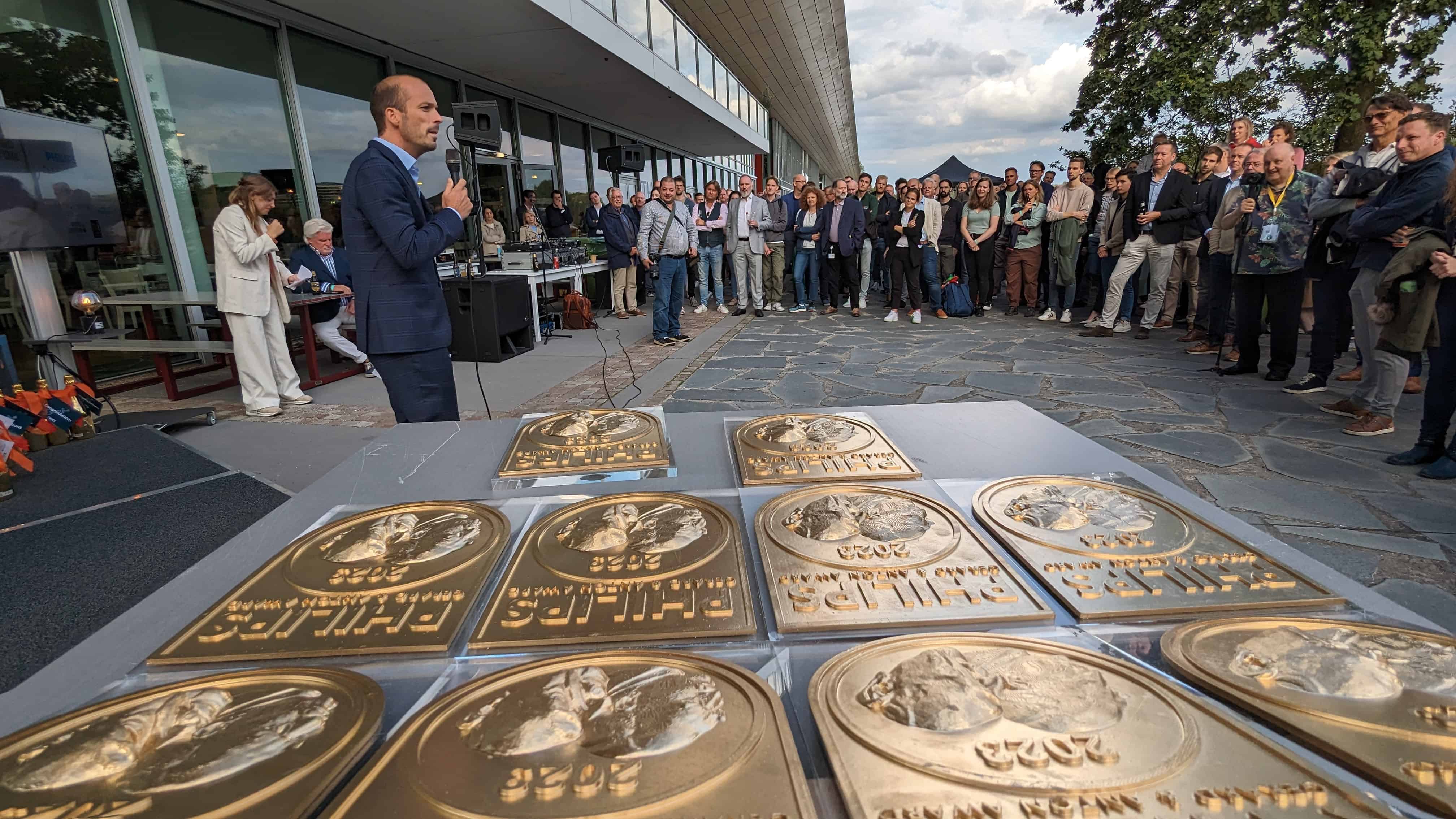
The Gerard & Anton Awards have been presented again! So it’s high time we took a closer look at the winners and what we can expect from these start-ups in the coming years. Today: Ratio.
General information
Founders
Tim Wilschut and Tiemen Schuijbroek
What does Ratio do?
“We offer software for writing highly structured system specifications which are in accordance with the standards which a system is required to meet. We use algorithms to automatically check the consistency of each such system. From this we deduce the so-called ‘system architecture models’. These models help engineers understand their system and prevent design errors.
When was it founded?
6 September 2018
How many employees do you have?
“Right now there’s just the two of us. As from September, we have a part-time employee for one day in the week. This is a graduate who has already worked with our software at VDL-ETG. He’s employed by them and will be working for us one day per week. We also hire expertise from the TU/e as well as work together with various graduates.”
Got funding yet?
“We do not need any external investors because we are already able to offer our consultancy services to customers. That’s good, because then we don’t have to give away any shares or other parts of our company. We did make a number of grant applications. The MIT South grant has been approved for an innovation project for SMEs. We will use this grant to hire an academic programmer.”
Jury report
The jury has written the following about Ratio in its report: “Complexities of more modern products and the interactions within a product, an airplane or a bridge, are enormous. Ratio has developed tools that are able to model and manage these complexities. This is crucial so as to avoid budget overruns or even worse fatal errors.”
What do you do?
Wilschut: “Companies have often written down explanations of their systems in different Word documents. Errors creep into them very quickly and it is extremely difficult to keep all documents complete, consistent and up-to-date. That costs time and money. We have developed a language which allows us to write down system specifications in a very structured way. An algorithm ensures that a description of how a system works is formulated and designed in the same way. Visual models of the system architecture are also made. In this way, the data can be read and understood by all parties involved thereby reducing the risk of errors.”
“For example, for the Rijkswaterstaat (part of the Dutch Ministry of Infrastructure and Water Management) examined the instructions on how to operate, control and monitor locks. At present, Rijkswaterstaat stipulates a separate control system for each bridge or lock. Several parts of these are of course the same for all bridges or locks. That’s why we analyzed how they could divide the operating system into reusable blocks. For example, many locks use the same system for operating the doors. Once that has been written down neatly and in a structured manner, it can be easily reused. That saves a lot of programming. Rijkswaterstaat is now going to test this system on locks within a specific area in the Netherlands. We will play a role in this.”
Schuijbroek: “Recently, we have also been able to precisely describe the dynamic behaviour of a system. This makes the overall description more complete. An example: a lamp and a switch have an energy relationship. The switch must be in a certain position before the lamp lights up. Therefore, the position of the switch must be described extremely precisely, so that no misunderstandings are able to occur. In addition, the instructions for a switch keep recurring across the different systems. This part of the system specification can be reused more often this way, and the document remains consistent. That’s also how it works for more complex systems.”
How did you come with this idea?
Schuijbroek: “Tim did research on this technique during his PhD. So he was already toying with the idea of setting up his own company. He found that far more interesting than working for a large multinational. About halfway through my graduation project at Eindhoven University of Technology (TU/e), Tim asked me what my entrepreneurial ambitions were. I decided to do an internship at a large company in order to gain experience there. But in the end, we both started out as entrepreneurs.”
What motivates you?
Schuijbroek: “During my internship I saw that employees in a company often see things go wrong, yet for various reasons they can’t do anything about it. I didn’t like that. I wanted to do things differently myself.”
“We want to help engineers by taking away some of the frustration by using our software. By being able to clearly visualize systems, their task often becomes a lot more transparent. It saves them a lot of time because the information is all mapped in the same way. It works a lot better as it is much more comprehensive.”
What is your goal as a company?
“At the moment we are mainly doing consultancy work for our clients. We help them by making their system easier to understand with the use of our software. For example, we provide support in the design of a product family. Over the next two years, we want to further develop this software so that it becomes available to our customers and so that they wil be able to solve their own problems by themselves.”
“When we actually sell the software to companies and whenever their employees work intensively with it, we will also need to set up a customer service department. Especially as it is a knowledge-intensive product. Helping our customers to get the most value out of it is very important to us. In a few years’ time, we hope to have a company with 30 to 50 employees. We ourselves are mainly responsible for developing and tackling new issues, whereas, for instance, our customer service is run by employees.”
What can we expect from you in the coming years?
” We have several new developments coming up. For example, a graduate is about to start at Ratio. He is going to examine how we can bridge the gap between the format in which we write the system specifications, and the format of other applications which are widely used by companies. That way we can connect the applications together and more people will be able to use them.”
” Furthermore, an innovation agreement with VDL-ETG is going to be launched in September. This multinational sees our software as a tool to make their systems more transparent. This will also include the TNO-ESI research institute. ESI has a very specific question. They have a type of software with which they want to use our format in order to be able to write systems in a more structured way. We will be looking into the technical aspects of how we can achieve this.”
“We are also exploring together with Holland Innovative how our methods and techniques might be integrated into the various training courses that they offer. We hope that this will further spread our knowledge of Systems Engineering and Requirements Engineering within the industry.”
” We aim to further develop ourselves and our technology through these various contracts. We strive to meet the needs of our customers in an optiGeramal way, while keeping our own development goals in mind. That’s an interesting process.”








